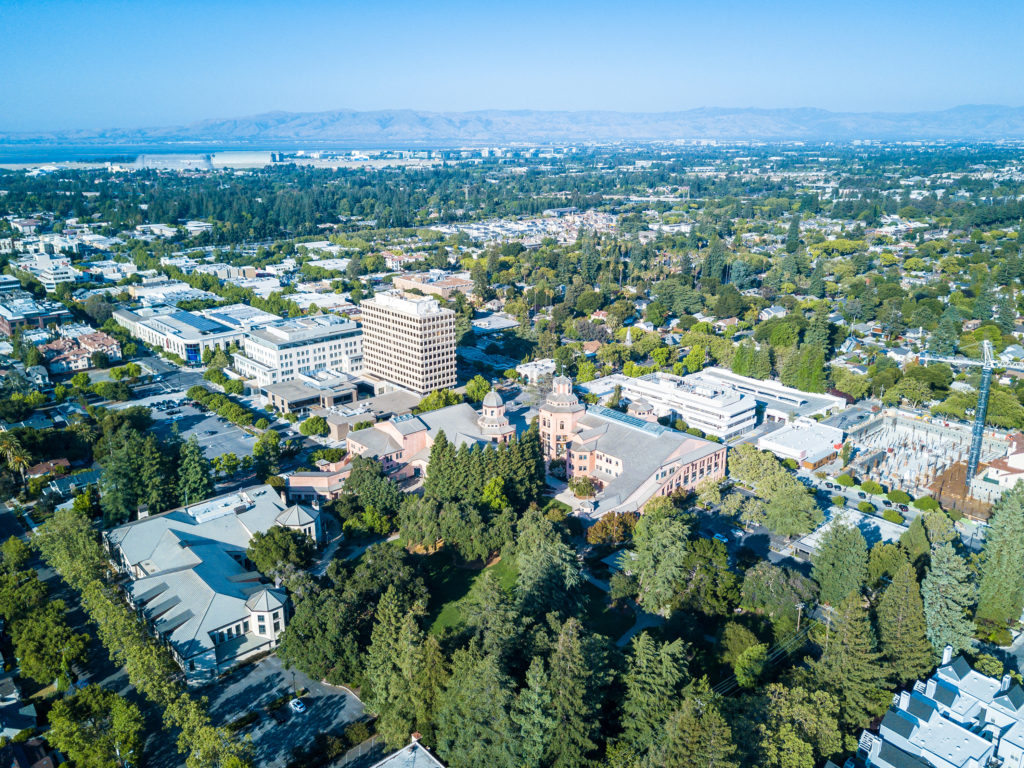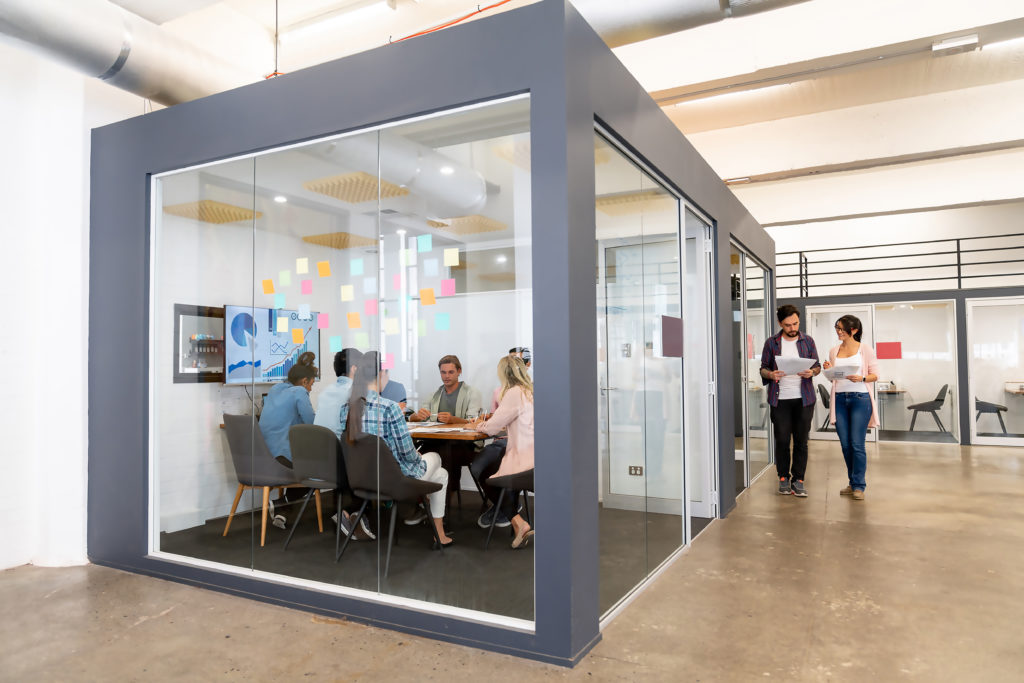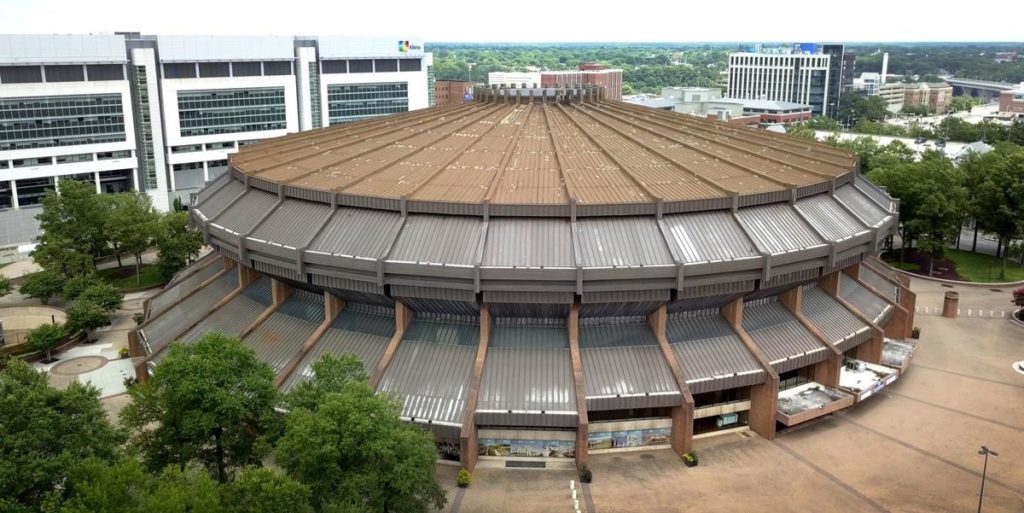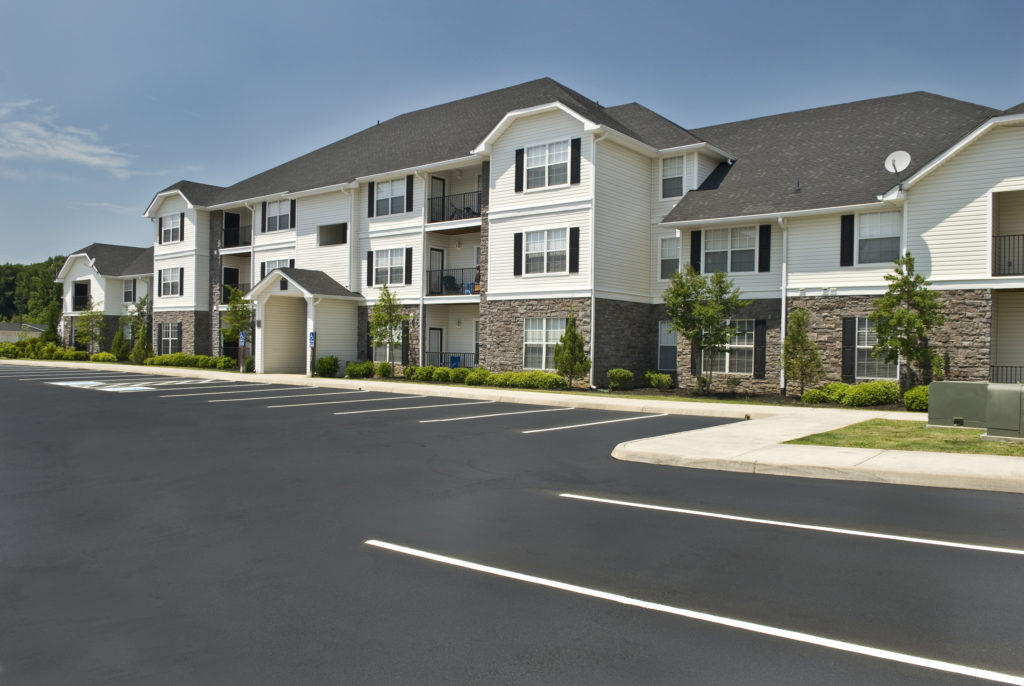Marchetti Properties unloads five shopping centers for $125M
These are the Top Performing Submarkets for Multifamily Rent Growth
Many investors in the multifamily sector have been pleased with the economy’s current status. They have been enjoying benefits and profitable returns, and some of them have come in unexpected places. Specifically, a few submarkets have shown up as leaders in rental growth during the past 8 years. RealPage, one of the leading providers of real estate software and data analytics, looked at 671 submarkets.
These submarkets comprise the 50 biggest multifamily markets in the United States. They rated them based on rental growth from the year 2010 until June of 2018. Let’s take a look at a few of the top performing submarkets for multifamily rent growth as shown in their study.
1. Mountain View, CA
This submarket of San Jose was ranked number 1 in rental growth. It saw a whopping 69.7% increase in the cycle overall. Considering it is in the heart of Silicon Valley, it is home to some of the more expensive rental rates for Bay Area submarkets, with average rents of more than $3,300.
2. Fremont, CA
Fremont is somewhere between Oakland and Berkley, California. It normally falls behind on the rental scales, however, this cycle saw an increase of 60.8% Although rental rates are around $2,300, this fears a bit higher than Oakland rates but much lower than rates in San Jose proper, or surrounding areas.
3. Southwest Aurora, CO
This submarket is located outside of Denver and has become one of the metropolitan area’s top performers regarding rent growth. Aurora contains mainly Class B apartments and has seen a 7% increase on rental rates annually on average. The total cycle rent growth was just under 60%.
4. Redmond, WA
Redmond, WA is a Seattle suburb in the pacific northwest of the U.S. This area saw staggering rental rate increases in the cycle at 62.3%. This is a specifically interesting area because it is home to major companies like Microsoft and Nintendo. However, rental rates are around $2,000, which is far less than in comparable areas.
5. Aloha, OR
Aloha, Oregon is a few miles west of Portland. Rental rates saw a growth of 60.1% between 2010 and 2018. Monthly, rent can run tenants at about $1,325, which is quite reasonable in comparison to other west coast areas.
The shocker surrounding this study by RealPage is the fact that leaders in the highest rated submarkets are ones who are normally outperformed. It seems these markets are closer to more affluent neighborhoods with strong economies. It is clear that the thriving economies are drawing renters to suburbs where they can maintain jobs in the areas with profitable economies while living in more economical locations.
Not surprisingly, we all see all of the top 5 submarkets in the western United States. The west, specifically California, is known for steep rental rates. The rental rates are suspected to balance out in the coming years, so it will be wise to watch the multifamily sector in these areas as the rates continue to rise.
Flexible Workspace Trends We’re Watching in 2019
Office space is a unique sector. Offices need to be functional while suiting many different roles, employees, and personalities. Some offices have argued that an open format workspace is ideal. However, many open spaces can be noisy, full of distractions, and lack privacy. On the opposite side of the spectrum, we have cubicles. These spaces help ensure you have privacy and fewer distractions, but you are basically closed off from interaction and collaboration. In an effort to find a happy medium, you may have heard about flexible spaces.
What is Flexible Workspace?
Flexible office space is considered an alternative to more traditional office styles. It allows for versatility, which has begun to change the game and benefits employees and employers alike. A flexible office presents diversity in the areas employees can work, and often combines open layout office space, and private cubicles or workspace.
Why Choose Flexible Workspace?
Multiple options allow different types of employees to thrive. Most flex workspaces, as they are also known, utilize modular furniture and easy to move dividers to allow the space to be changed if needed. This creates a cost-efficient and effective option if something needs to be altered or redesigned in the future.
Additionally, this allows you to support the growth or change of a company. You can reconfigure the size, shape, and style of work areas if needed. Companies are also able to support remote and contracted employees, or temp positions with ease. This alleviates the need to generate space in a pinch. Flex workspaces also encourage employee interaction, without forcing them to interact, as an open workspace can. It helps facilitate lines of communications and promotes employee happiness overall.
According to a study done by The Instant Group:
- Landlords recorded increase property values, an increase in tenants and fewer vacancies
- Operators quoted increases in enterprise customers and more ways to offer flexible options to customers
- Corporate occupiers felt they benefited from employee flexibility and reduced costs
- Small business owners the flexible work option, networking opportunities and expanded professional network
Additionally, 72% of those surveyed by The Instant Group said they felt the growth of the flex workspace in the office sector had a positive effect on their work. In major metropolises like Miami, Boston, The Bay Area, and New York flexible office space has proven effective in making sure companies feel like they are getting the most from their leases.
This is also giving investors and landlords better returns. When looking at real life profitability of flex workspaces, we can observe CommonGrounds Workspace in San Diego. This company operates flexible office spaces in the western U.S. Recently, they announced they raised $100 million toward expansion. Within the next few years, they plan to operate around 2 million square feet of flex workspace.
As we are required to work more, it is important that the office space expands into something that facilitates employees, employers, and building owners where the offices are housed. Flex workspace seems to do just that, and it is exciting to glimpse into what it has to hold for the future.
5 Ways to Prep your CRE Property for Listing Photos
“Use a picture. It’s worth a thousand words.” — Tess Flanders, newspaper editor
The notion that a picture is worth a thousand words is by now a cliche, sure — but that doesn’t mean that it’s not true. In fact, quite the opposite is actually true. When it comes to marketing any commercial property, one of the best and smartest investments that you can make is in professional photography of your space. But why?
The answer is simple. High-quality photography can be used across a number of different marketing touch points, including your website, print pieces, and other collateral. But one of the best ways to use your photos in listing portals. It’s no secret that the commercial real estate marketplace is becoming more competitive, so having compelling photos of your space can be a great way to set your property apart and capture interest more quickly.
With this in mind, let’s take a closer look at 5 ways to help you prep you commercial real estate property for listing photos:
Declutter the space
It seems obvious, but you would be surprised at how many people simply don’t take the time to properly declutter a space before photographs. Marketing your CRE property is all about selling your space to potential tenants or buyers. This includes the location, physical space, the benefits of any amenities offered, and more – but it does not include the stuff (aka clutter) inside your space.
A good rule of thumb is to remove as many things as possible, without causing the space to feel stark or cold. Properly sized and staged things can give the space needed proportion — but too many will make your space look small.
Bump up the curb appeal
While curb appeal is undoubtedly talked about more in residential real estate, the truth is that first impressions matter everywhere. Have your landscape crew tidy up around the property just before the photos are taken, and add seasonal, colored plants into your landscape design ahead of time. Have the maintenance team or an outside cleaning crew wash all of the windows, replace any burned out light bulbs, pressure wash the exterior where needed, and tend to anything that may be broken.
Find the best light for your shoot
The most important listing photo for any commercial property is arguable the street view of the property. As such, you’ll want to pay attention to the natural lighting on your property. Take note of the direction of the sun, based on the street view. Keep in mind that most properties will look their best when the sun is low but shining on the building — and determine the best time of day for your photos, based on this information.
As any professional photographer will tell you, lighting is crucial. Try to avoid harsh, direct sunlight — but you’ll also want to avoid any dark shadows, as well. A soft and evenly balance of light makes for the best photos every time.
Avoid portraying a specific time of the year or season
Another pro tip to help avoid dating your photos is to make sure you aren’t depicting a particular time of the year or season. Believe it or not, many buyers tend to detach from images — and by extension, your property — when it’s the middle of winder and they see summer photos, and vice versa.
Keep things balanced
In order to keep your space looking balanced and straight, pay close attention to the lines in your photos. Anything vertical should appear vertical, anything horizontal should appear horizontal, and so on. It has been proven that buyers tend to shy away from images where the floors appear to slope or the walls appear to be crooked. While they can’t quite put their finger on what’s “off” with the photo, typically, they tend to view these images — and your property —less favorably.
4 Ways VR and AR will Change the Construction Industry
Both virtual reality and augmented reality have been hot topics on the lips of many throughout various industries, but what exactly do these items mean and how do they impact the construction industry?
You may have heard the terms VR and AR interchangeably, however they have distinct differences. According to The Franklin Institute, AR is exactly what it sounds like, it literally augments reality by adding digital images to real scenery, normally via a camera. A common example of this is the popular Pokemon Go game that swept the nation in 2016.
Virtual reality, on the other hand, creates a completely immersive experience. By blocking out reality it immerses the user in a totally different environment. Additionally, the two have now combined to create mixed reality, also known as MR. This allows AR and VR to combine and create the capability to blend the real world with virtual reality simultaneously.
Now that you understand what exactly these terms mean, how will they change the construction industry in particular?
1. Saving Money
One major benefit VR and AR can have on the construction industry is the ability to save companies a substantial amount of money. Designs can be laid out beforehand and literally walked through to increase accuracy and avoid having to rework or replace features during or after construction.
2. Efficiency
AR, and specifically VR, can be very helpful to ensure designs are efficient prior to building. This is especially helpful when collaborating with industries where layout and placement are pivotal in day-to-day functions.
One industry where VR can be used to make sure a building is constructed in the most efficient manner is hospitals. VR can be utilized to allow nurses and doctors walk through a proposed design and see if they can complete daily duties. This will help avoid problems in the future once the building is already constructed.
3. Safety Training
Both AR and VR are helpful when it comes to safety training for construction workers. It allows them to practice using heavy machinery without the risk of injury or costly damages. According to Tom Wilkerson, owner of Certifyme.net, more than 100,000 injuries are caused by forklifts each year. The majority of these injuries were due to improper training. With VR and AR, workers can be trained in full and remotely, without companies having to use funds for travel or equipment.
4. Customer Relations
Customers can experience improved customer relations when VR or AR is used to walk them through the construction process and proposed finished product. It allows the General Contractor to set realistic expectations and show what exactly can be created or done with a space. This leads to a better, more transparent experience for the client, and leads to fewer complaints and return business in the future.
Though VR and AR have some ways to go before they are fully integrated into day-to-day construction activities, there is brightness on the horizon for when that day occurs. AR and VR have the potential to improve and change the construction industry like never before, making it more profitable and more functional.
County, Centerpointe developers have big plans for ‘downtown Chesterfield’
Manchester project adding office to the mix
Waterfront apartments and a new city hall: developer wants to reshape downtown Portsmouth
Local developer submits plan to Richmond for renovating Coliseum and redeveloping area around it
6 Creative Ways to Increase the Value of Your Multifamily Property
Whether you are looking to sell your multifamily property or want to validate raised rates for the asset, you’ll want to increase the value of the property. Let’s take a look at six creative ways to increase the value of your multifamily property.
Perform Repairs and Make Improvements
If your multifamily property needs to be modernized or needs cosmetic work, by performing these tasks, you can significantly raise the rent. The rental income from outdated units will land somewhere in the middle of modern rent prices and those from its original era. An upgraded unit can fetch market rates. Consider painting the property’s exterior and upgrading the leasing center as well as the units. This is going to be the most effective way to increase the value of the property.
Increase the Rentable Square Footage
If there are common areas on the property, it can be tough to catch the true value of these in the rent. Increasing the area of rentable square footage can result in a higher total rental income. Many renters would prefer having larger units than extra common areas.
Subdivide or Combine Units
If the property is not the right size or configuration to adhere to the current demographics in the market is located in, you can add value to the property by subdividing or combining units. If you have two 1,500 square foot units and the demographics in your area call for more families with children, consider combining these units to create a 3,000 square foot unit that can tailor to a four-person family. This can help decrease vacancy as well.
Reduce Property Expenses
All of the expenses that come with owning a multifamily property add up, such as advertising, insurance, lawn maintenance, accounting, legal fees, property management, licenses, and repairs. Anything that can be done to decrease these expenses without sacrificing the quality and care of your property can put money back into your pocket and increase the value of the asset.
Meter Separately
Gas, water, and electricity are all consumable resources that will be variably used by tenants. In order to maximize the value of the property, pass off these expenses as much as the market will allow in your area. If the infrastructure of your multifamily property is not metered separately, consider making it so. This submetering can help allocate expenses to your tenants fairly and take this burden off of you.
Raise Rent
If your rates are significantly below market, you may be able to bump these up when the next opportunity arises. Even a 2% or 3% annual inflationary increase will add up over the years. You can definitely raise rents if you have performed upgrades both cosmetically and with technology both in units and in common areas.
The number one goal when investing in multifamily property is to increase the Net Operating Income. These tips are ways to create value-adds that will increase the property’s worth so you can either sell or raise the rent depending on your overall goal.











